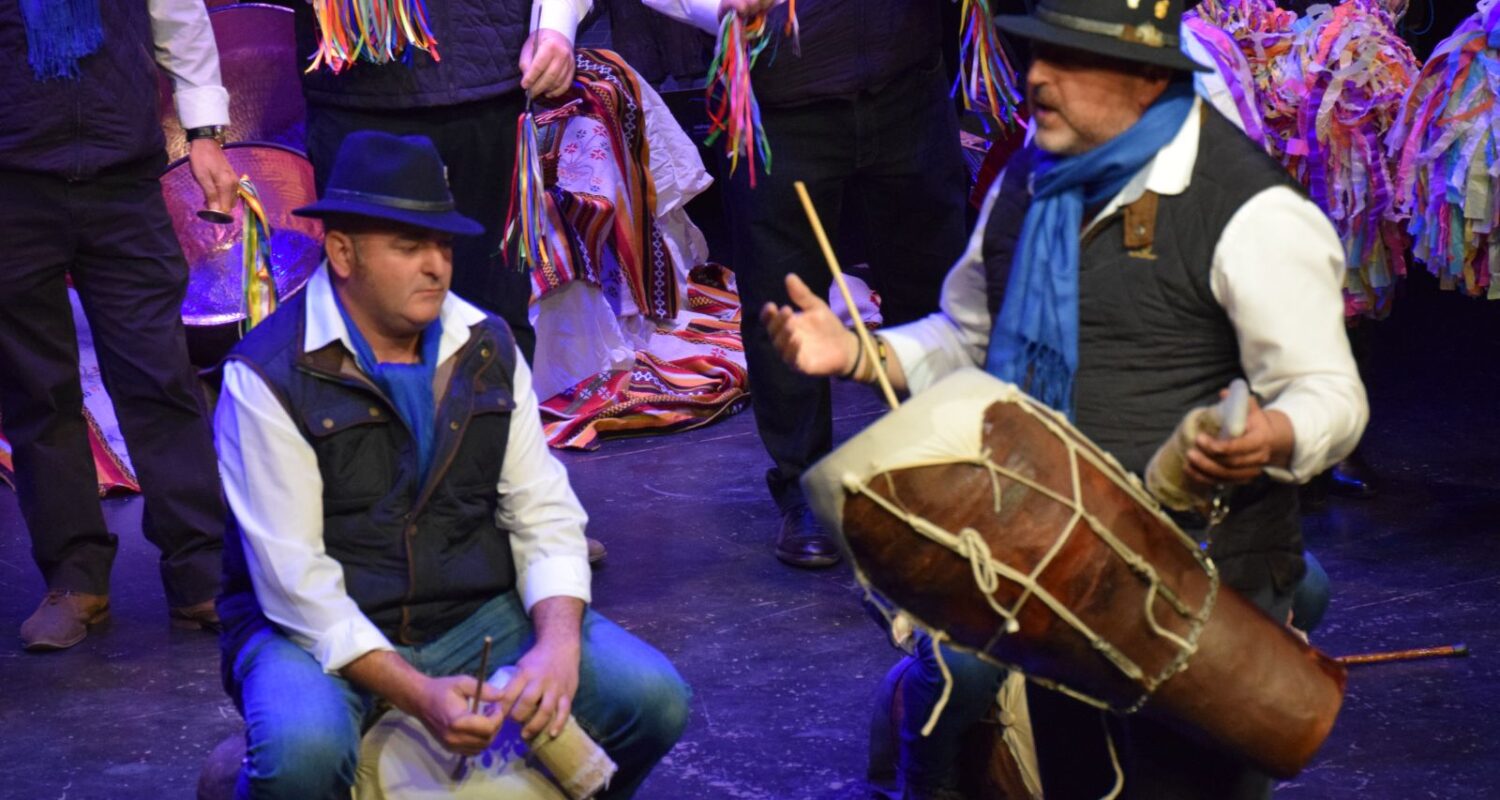The zambomba is an instrument that resonates with the joy and communal spirit of Spanish Christmas celebrations. Its distinctive sound is as integral to the festive season in Andalucia as carols are around the world, a background note to the festivities that spans generations.
What is a Zambomba?
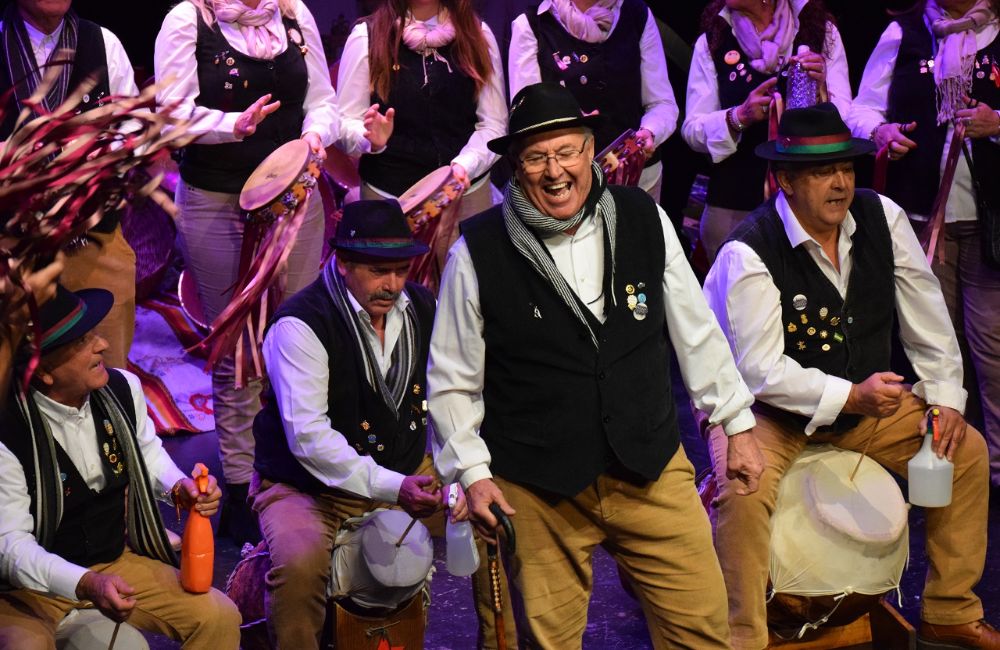
First and foremost in Malaga the zambomba is a percussion instrument, consisting of a pot-shaped body made from clay or wood (see instrument the men are sitting on in the image above). Across the open end of the body, a membrane, often made from animal skin, is stretched. A stick is then attached through the centre of this membrane. To play the instrument, the musician rubs the stick with a damp cloth, which creates a deep, vibrating sound that can vary in pitch and intensity depending on the pressure and speed of the rubbing. However, a zambomba can also mean a festive gathering.
History of Zambombas
The zambomba as an instrument has origins that date back to at least the Middle Ages. Its name derives from the Arabic ‘zanboor,’ meaning drone or buzzing, which accurately describes the sound it produces. This humble friction drum has been associated with Christmas celebrations in Spain for centuries, particularly in Andalucia.
Traditionally, the zambomba was played during the ‘zambombas’ (we’ll get on to those in a minute) — festive gatherings where friends and family come together to sing Christmas carols, known as ‘villancicos.’ These celebrations are typically held in patios, squares, or around bonfires, creating a warm atmosphere of community and merriment.
Where It’s From?
The zambomba is especially tied to the region of Andalucia in southern Spain. Jerez de la Frontera, a city in the province of Cádiz, is particularly known for its zambomba festivities, where the instrument has become a symbol of local Christmas traditions. However, the popularity of the zambomba has spread across Spain and can be found in various regional forms throughout the country.
Zambombas Through Time
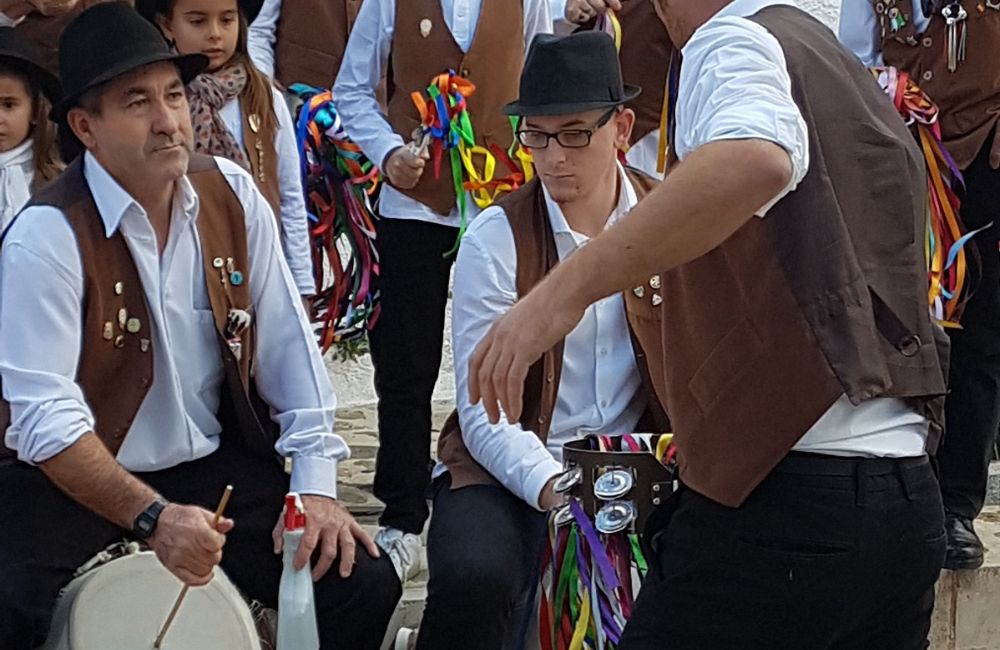
Over time, the zambomba has been more than just a musical instrument; it has been a focal point for social gathering and celebration. In the past, it was not uncommon for people of all ages to come together, with the elderly playing the zambomba and the younger ones dancing and singing along.
In recent years, there has been a revival of interest in traditional Christmas celebrations, with the zambomba experiencing a renaissance of sorts. Modern zambombas are now often larger public events, with local councils and cultural associations organising festivities that can attract tourists.
The zambomba is much more than an instrument; it is a cultural icon that captures the essence of Spanish Christmas celebrations.
The Zambomba and Flamenco: A Cultural Crossover
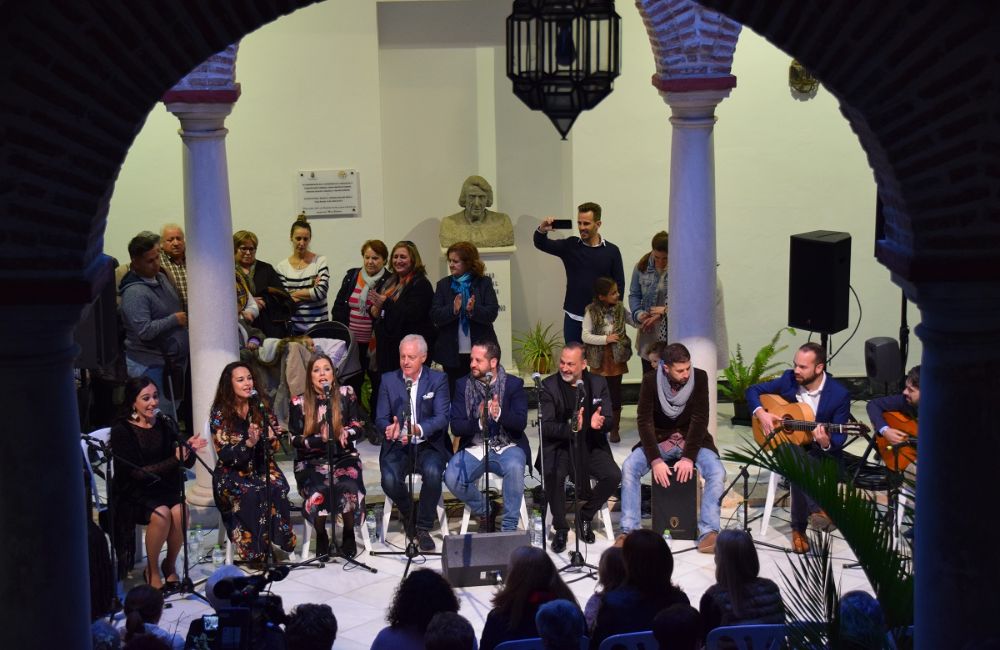
The zambomba and flamenco, both deeply rooted in the rich cultural tapestry of Andalucia have an intertwined relationship that exemplifies the region’s festive spirit and musical heritage. Flamenco, recognised worldwide for its passionate dance, intricate guitar playing, and profound singing, finds a harmonious partner in the rustic and communal sounds of the zambomba during the Christmas season.
Cultural Intersection
Flamenco, with its origins in the diverse cultural influences of Andalucia — is a powerful expression of emotion and identity. It is typically associated with themes of love, death, and hardship, and its performances are marked by spontaneous interaction between the singer (cantaor), guitarist (tocaor), and dancer (bailaor or bailaora).
The zambomba, meanwhile, serves as a vessel for collective joy. Its simplicity and the communal aspect of the zambomba festivities allow for an inclusive celebration where everyone, regardless of their musical ability, can participate. During the Christmas period, these gatherings are not just about music but also about community bonding and celebration.
The Flamenco Influence on Zambomba Celebrations
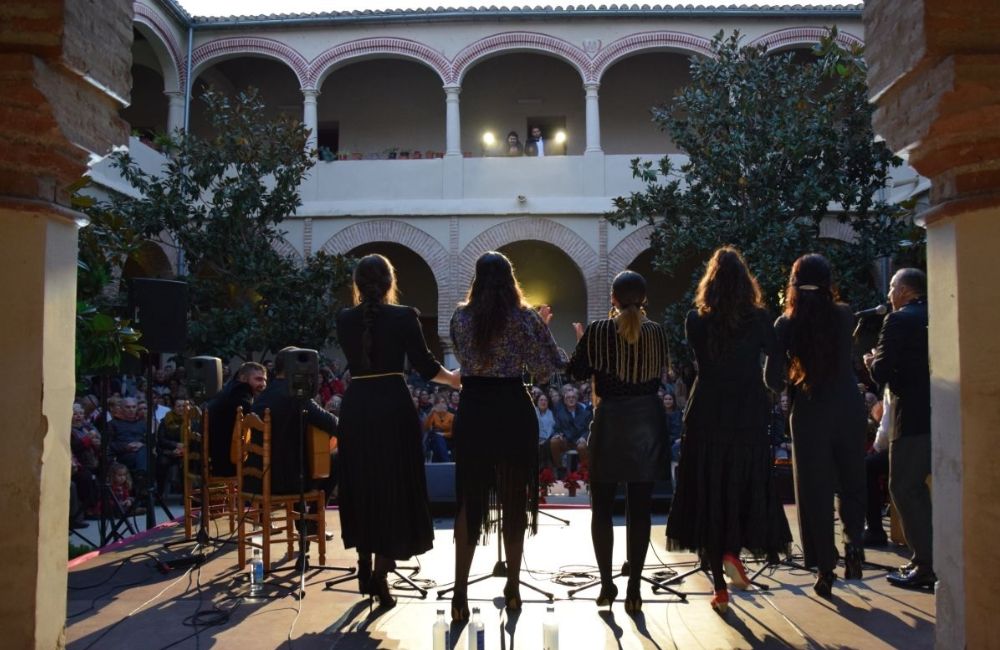
Flamenco has had a significant influence on the way zambomba is experienced today. The traditional ‘villancicos’ sung at zambomba gatherings have been infused with the rhythms and styles of flamenco music, leading to a unique genre known as ‘villancicos flamencos.’ These songs often incorporate the compelling rhythms of bulerías, tangos, or soleá, which are all traditional branches of the flamenco tree.
The emotionally charged and highly expressive singing style of flamenco adds depth and intensity to the Christmas carols. Flamenco singers bring their characteristic vocal inflections, from the deep, soul-stirring lament to the exuberant and lively joy, depending on the mood of the piece.
Flamenco Artists and Zambomba
Several flamenco artists have been pivotal in blending these two traditions. They adapt the solemn, heartfelt style of flamenco singing to the festive villancicos, creating a crossover that enriches both genres. The result is a captivating and sometimes poignant rendition of Christmas carols that are inherently Andalucian in spirit but universally touching in their emotional range.
The tradition of singing ‘villancicos’ at zambomba celebrations has given rise to several notable singers, though they are typically more famous for their singing than for playing the instrument itself. Artists like La Paquera de Jerez, José Mercé, and La Macanita have included traditional villancicos in their repertoires, bringing the soulful sounds of Andalucian flamenco to these age-old Christmas songs. They are among the modern torchbearers of this tradition, contributing to the continued popularity and evolution of the zambomba gatherings.

Flamenco in the Axarquia
A villancicos flamencos or zambomba shouldn’t be missed when visiting the Axarquia during Christmas. The crossover between zambomba and flamenco is a testament to the dynamic and evolving nature of cultural traditions in southern Spain. This cultural blend has not only preserved but invigorated the tradition of the zambomba, ensuring that it continues to be a beloved and vibrant part of Spain’s Christmas celebrations, echoing through the cobblestone streets of Andalucia and beyond. Notable villages for villancicos flamencos or zambombas in the Axarquia are Benaque and Velez-Malaga. There are many opportunities to see a this festive music during late November, December and early January, the video below gives you a little taste of the Zambomba in Peña Flamenca Nino de Velez. They are always very popular so get your tickets early!

